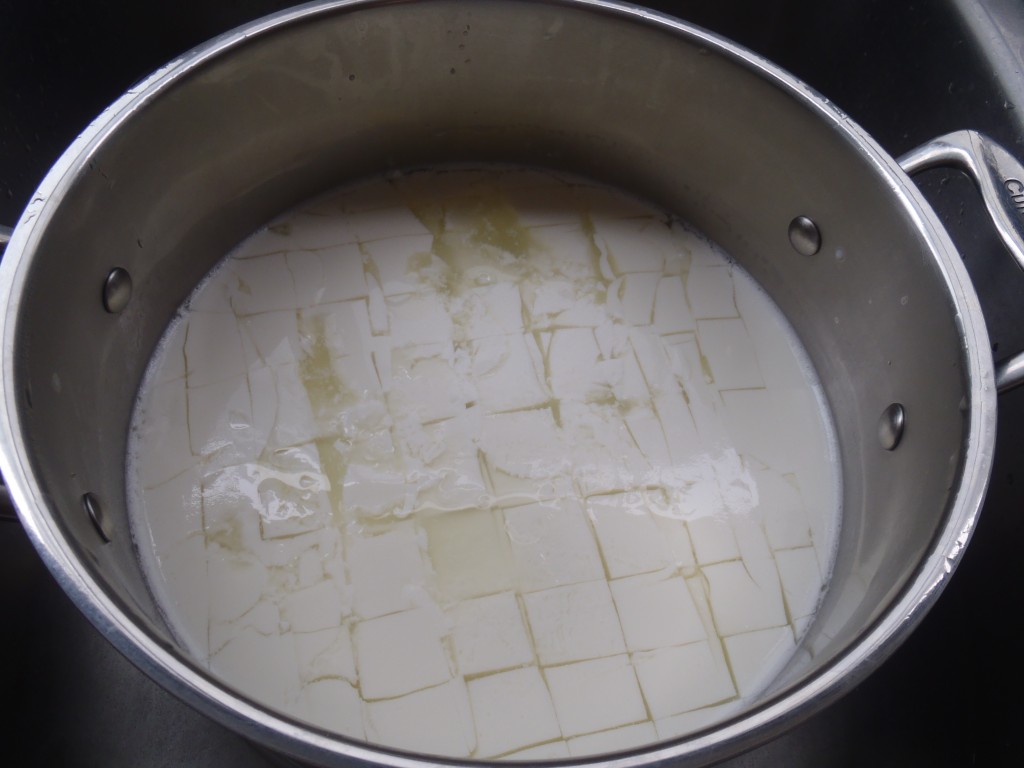I recently looked up “mozzarella” in Larousse, and found the following descriptions:
- “a fresh cheese, springy and white”
- “kept in salted water or whey, shaped into balls or loaves of varying size”
This sounded utterly unlike any mozzarella I’ve had before. Turns out there are two types of mozzarella in this world: the traditional fresh mozzarella, described above, and the American low-moisture mozzarella, which includes the familiar white bricks at the grocery store. Traditional mozzarella belongs to a class of cheeses called pasta filata, which means “spun paste” or “spun curds”. The curds are heated, then stretched repeatedly to develop an elastic texture in the finished cheese. Other cheeses made by this method are provolone, scamorza, and caciocavallo.
I later found out that I have had traditional, fresh mozzarella, in the form of bocconcini, which is not a distinct type of cheese, but rather a specific shape (“bite-sized”) of mozzarella. The process of cutting and shaping pasta filata is called mozzatura. Besides bocconcini, there are other traditional shapes, like trecce (braids) and nodini (little knots).
There are hundreds of pages on the internet that explain how to make fresh mozzarella at home. Most of these use citric acid to acidify the milk. I am using bacterial cultures from Danlac, which are supposed to result in a more aromatic, spongy cheese. As with the yogurt earlier this week, I was working from the cursory, quasi-industrial specifications supplied by Danlac. After two botched attempts, I finally made good mozzarella with the help of this instructive demonstration by Fias Co Farm in Michigan.
Making Mozzarella with Danlac Bacterial Cultures
The following is for 4L of whole milk.
Heat the milk to 34°C. This is the ideal incubation temperature for the cultures.
Add a pinch (about 1/8 tsp) of the bacterial cultures, Choozit TM 81. Stir briskly. Hold at 34°C until the pH drops to 6.5, about one hour. I held my milk in a warm water bath to stabilize the temperature.
Add roughly 1/10 of a packet of Valiren microbial cheese rennet (one packet is for 50L of milk). Stir the mixture. The rennet will coagulate the proteins in the milk to form curds. The ideal temperature for the rennet is the same as for the bacterial culture, 34°C. Coagulation is complete when you obtain a “clean break”. To perform a clean break test, stick your finger in the pot and pull it through the curd a couple inches. The curd should separate cleanly, and clear whey should pool in the crevice (see photo, below). My coagulation times ranged from 1.5 to 2 hours.
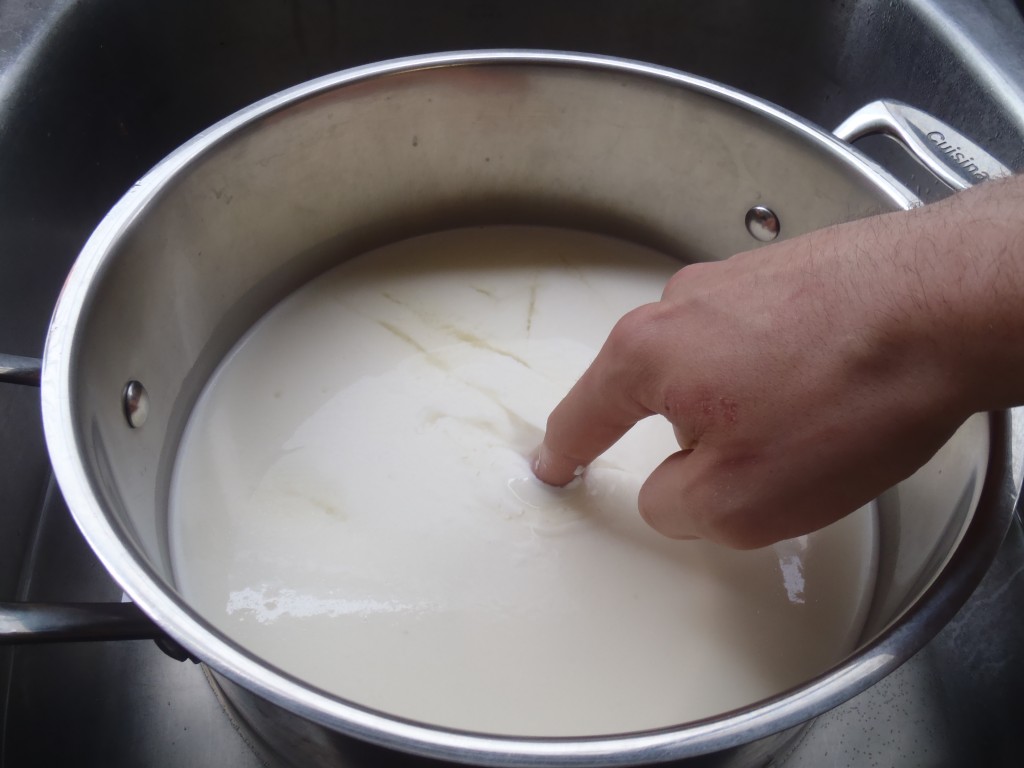 Cut the curd into small pieces, about 2-2.5cm, with a sharp knife. This releases whey from within the curd, making for less moisture in the finished cheese. Let the curds rest for 5-10 minutes.
Cut the curd into small pieces, about 2-2.5cm, with a sharp knife. This releases whey from within the curd, making for less moisture in the finished cheese. Let the curds rest for 5-10 minutes.
Hold the mixture at 34°C for about an hour, stirring occasionally during the first half hour. This stage gives the bacteria time to create more lactic acid. The pH must fall to around 5.0 or the curd will not stretch properly when it comes time to make the pasta filata. While stirring, the curds will shrink and harden somewhat as they release their whey, but they should remain moist, gel-like, and delicate.
Pour the curds and whey through cheesecloth. Strain until no more whey drips through the cloth. While straining, the curds will knit back together to form a homogeneous mass.
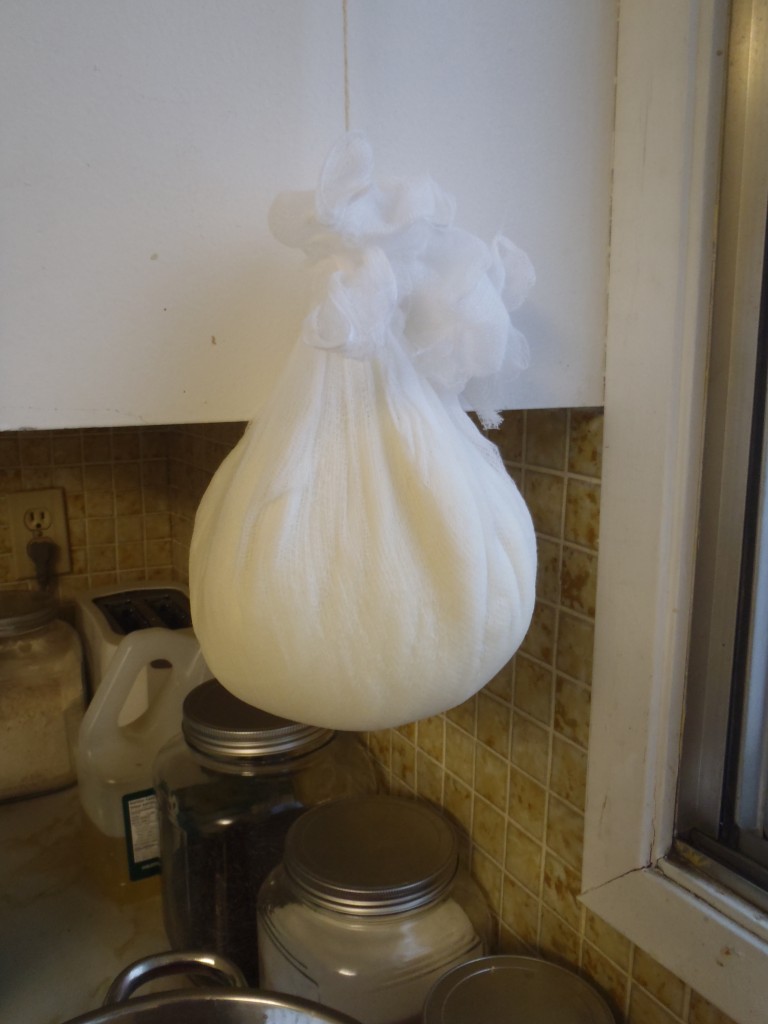 We now have cheese, but we need to make it into pasta filata. By heating and stretching the cheese we rid the curd of excess whey and give the final product its characteristic texture. You can heat the cheese either in a microwave, or in a pot of simmering water held around 70°C.
We now have cheese, but we need to make it into pasta filata. By heating and stretching the cheese we rid the curd of excess whey and give the final product its characteristic texture. You can heat the cheese either in a microwave, or in a pot of simmering water held around 70°C.
Once heated the cheese should stretch under its own weight. You will see whey run out of the cheese as it stretches. When the cheese cools and becomes less pliable, reheat it by your chosen method. Now is the best time to add salt.
 The last step is mozzatura, the shaping of the pasta filata. The most common shape is the sphere. Simply squeeze a section of the cheese so that it bulges out of your hand. Tuck the free end remaining in your hand into the bottom of the sphere.
The last step is mozzatura, the shaping of the pasta filata. The most common shape is the sphere. Simply squeeze a section of the cheese so that it bulges out of your hand. Tuck the free end remaining in your hand into the bottom of the sphere.
 To make bocconcini, use plastic wrap to roll the heated cheese into a log about one inch in diameter. Tie a knot of twine every inch, and refrigerate for eight hours. Cut the twine and unwrap the cheese. Separate the bocconcini and marinate in olive oil.
To make bocconcini, use plastic wrap to roll the heated cheese into a log about one inch in diameter. Tie a knot of twine every inch, and refrigerate for eight hours. Cut the twine and unwrap the cheese. Separate the bocconcini and marinate in olive oil.
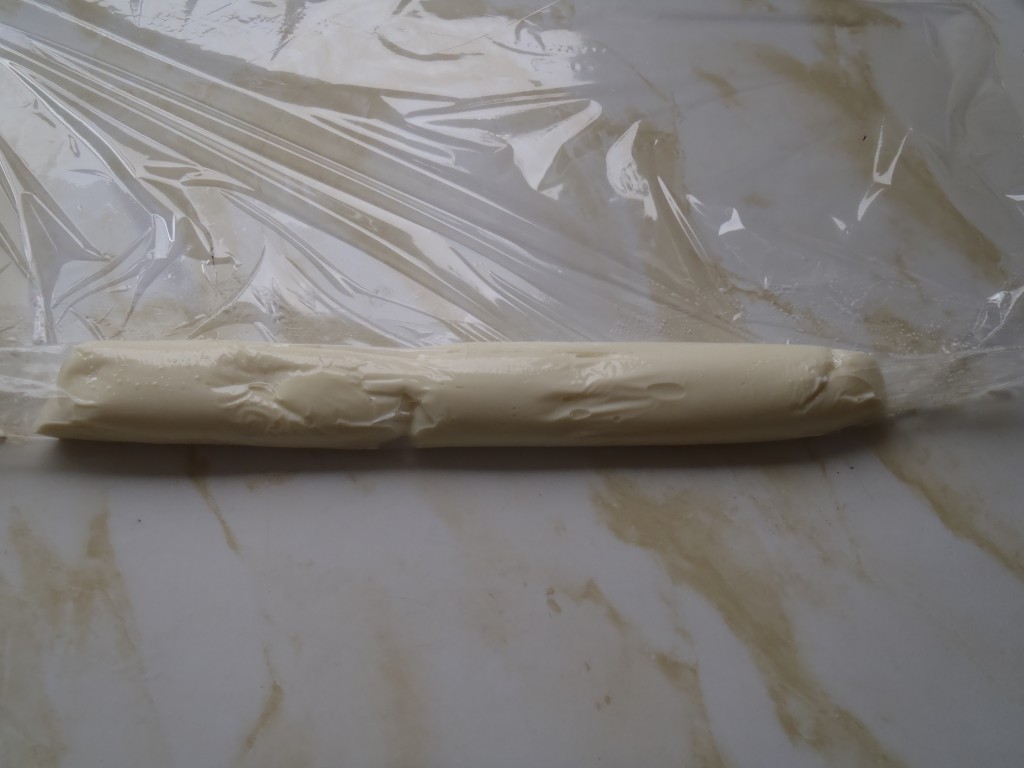
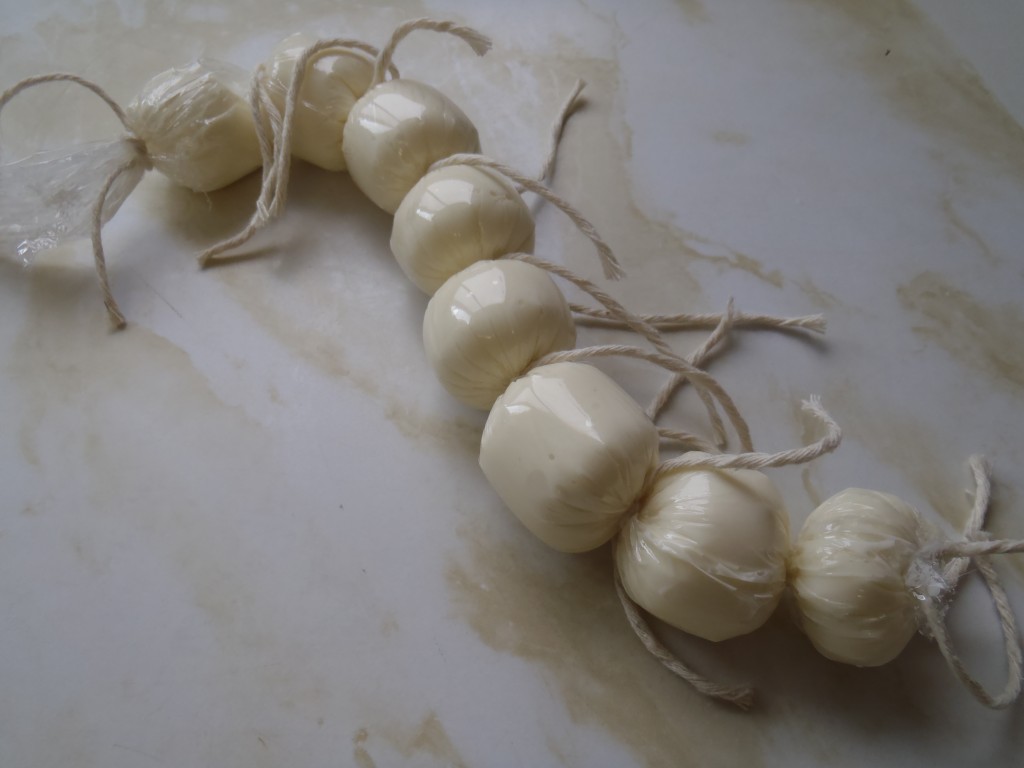 Here’s a shot of a margherita pizza we made with the mozzarella.
Here’s a shot of a margherita pizza we made with the mozzarella.
